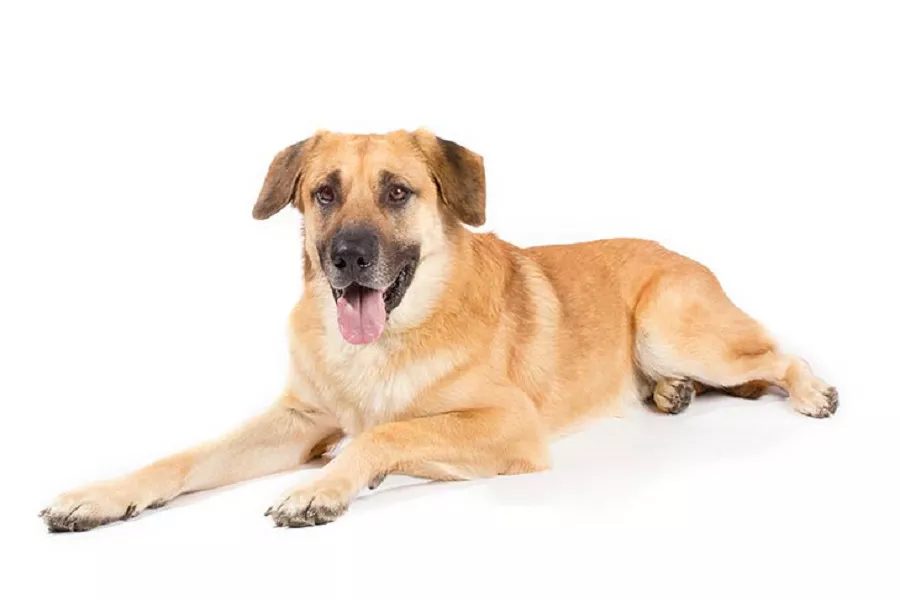Causes of Dog Panting Sometimes dogs pant for no reason, but panting is a common dog behavior and there is always a reason. To understand why the dog is panting, it may be excessive panting, or it may be at night, we need to consider what might be happening to the dog at this time. Are they anxious? hot? Dehydrated? Learn about common causes of panting in dogs so we can respond appropriately.
What is dog panting? What is dog panting? Moderate to rapid mouth breathing is a normal dog and puppy behavior that lowers body temperature and also allows oxygen to enter the dog’s bloodstream. The panting dog is breathing with his mouth open, his tongue sticking out a little. Panting as a cooling mechanism is necessary because dogs do not have an efficient sweat gland system like humans. Instead, dogs use the evaporation of water in their mouth and tongue and cool their bodies by exchanging warm air from their lungs with cooler outside air. Panting should not be confused with difficulty breathing. Dyspnea is characterized by strained breathing and may be accompanied by painful sounds, such as crying or whimpering, or whistling from the nostrils or windpipe due to obstruction. Common Causes of Panting Your dog or puppy may be panting for one of these five reasons.
- Panting from Exercise Dogs can pant from exercise even if they are not overheated. It’s a lot like the way humans breathe heavily during aerobic exercise. However, panting is also the primary way that dogs calm themselves down because they don’t sweat like humans do. While dogs’ paw pads do sweat, this doesn’t cool them down enough. Instead, dogs cool themselves with their mouths. Panting allows the dog to release heat and exchange it for cooler air. As you might imagine, this is not a very efficient process. It is less efficient for short-faced dogs such as bulldogs or pugs. This is why dogs start panting even if they are a little hot. The hotter the dog becomes, the more intense the panting becomes. Sometimes, heavy wheezing is accompanied by drooling and redness of the tongue and gums. In addition to deep breathing, warning signs of overheating include bright red tongue and gums, open eyes, and weakness. Take steps to keep your dog cool and minimize heat exposure to prevent overheating. Always take precautions to keep your dog safe in hot weather. Never leave your dog alone in the car, as the car can quickly become much warmer than the outside. When in doubt, take your dog to the veterinarian for treatment. TIP: When the outside air temperature is 102°F or higher than the puppy’s normal body temperature, panting will not be effective in cooling the puppy and can lead to heat stroke. Hot dogs may also resort to digging, digging out cool places to rest.
- Excitement or pressure Excitement and panting may have nothing to do with body temperature. Many dogs pant when experiencing fear, anxiety, or stress. Examples include car rides, fireworks, separation anxiety, vet visits, and other stressful events. Check your dog’s body language to help you determine if your dog is showing signs of fear or any other type of distress. Understanding the reasons for your dog’s fear or anxiety can help you minimize these events. If panting seems to be related to fear, anxiety, or stress, it’s best to get your dog out of the situation as soon as possible.
- Many dogs pant while playing. Panting while playing may just be a sign of your dog’s happiness. If so, the rest of your dog’s body language will reflect this happy mood. The tail will usually wag in a happy manner. There will be some relaxation in your dog’s body and facial features. The eyes will appear bright and happy. Once things calm down, the wheezing slows down and eventually stops. In relaxed, contented dogs, persistent light panting with open mouth and bright eyes is normal. In fact, many people think it’s a dog’s smile.
- Pain or Discomfort Dogs are very good at hiding pain and disease from humans. Some dogs work harder than others to hide their discomfort. However, once they reach a certain level of discomfort, they often can’t help but show signs such as being out of breath. Look for signs of other illness or pain, such as vomiting, loss of appetite, diarrhea, lethargy, limp, limp, and behavioral changes. Contact your veterinarian if you suspect your dog is sick or injured. If at any point you notice that the wheezing is very intense and unexplained, you should take your dog to the nearest veterinarian immediately. It’s best to play it safe and have a veterinarian check it out.
- These are some of the possible reasons why dogs may pant:
- Dogs with a high fever may pant to help lower their body temperature. Medications given by your veterinarian may increase breathing or panting rapidly.
- A very full stomach or a distended stomach can also cause your dog to pant, sometimes in preparation for vomiting
- This may be an emergency, and if your pet vomits or retches, it should be evaluated immediately. Cushing’s disease is a disorder caused by overproduction of the stress hormone cortisol, which can lead to excessive gasping.
- Laryngeal paralysis, a condition in which the muscles that open and close the larynx at the back of the throat are weakened or paralyzed, is another cause of panting. This condition is more common in older, medium-to-large dogs, such as Labrador Retrievers.
- Panting is usually accompanied by a high-pitched stridor called stridor.


























